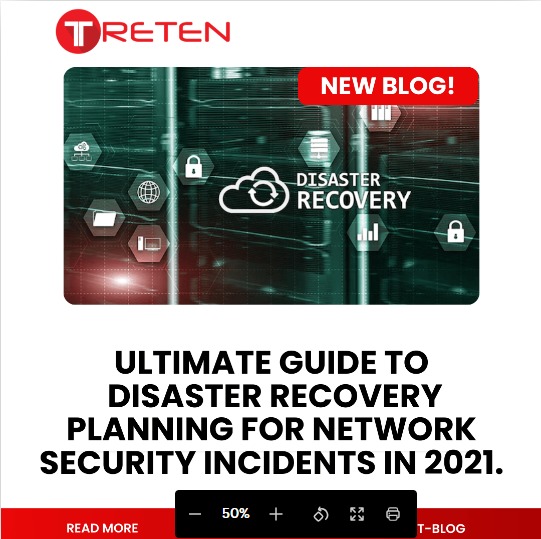In today’s digital age, organizations are increasingly reliant on their networks to operate. A network security incident can have devastating consequences, leading to data loss, financial losses, and reputational damage. To mitigate these risks, it is essential to have a robust disaster recovery plan (DRP) in place.
Understanding Disaster Recovery Planning
A DRP is a detailed plan outlining the steps an organization will take to recover its IT infrastructure and data in the event of a disaster. This includes cyberattacks, natural disasters, hardware failures, or other disruptions. A well-crafted DRP ensures that critical business functions can be restored quickly and efficiently, minimizing downtime and losses.
Key Components of a Disaster Recovery Plan
A comprehensive DRP should include the following components:
- Business Impact Analysis (BIA): This identifies critical systems, applications, and data that are essential for business operations. It helps prioritize recovery efforts and determine acceptable downtime levels.
- Risk Assessment: This involves identifying potential threats to the network and assessing their likelihood and impact. It helps determine appropriate security measures and contingency plans.
- Recovery Time Objectives (RTOs): These specify the maximum acceptable downtime for critical systems and applications.
- Recovery Point Objectives (RPOs): These define the maximum acceptable data loss in the event of a disaster.
- Backup and Recovery Strategies: This includes implementing regular backups of critical data and systems, as well as testing backup procedures to ensure their effectiveness.
- Disaster Recovery Site: This is a location where IT operations can be relocated in the event of a disaster. It can be a hot site, warm site, or cold site.
- Communication Plan: This outlines how information will be communicated to employees, customers, and other stakeholders during and after a disaster.
- Testing and Maintenance: Regular testing of the DRP is crucial to ensure its effectiveness. It helps identify any weaknesses or gaps that need to be addressed.
Common Questions and Answers
1. What are the most common causes of network security incidents?
- Cyberattacks: Ransomware, phishing, malware, and DDoS attacks are among the most common threats.
- Human error: Mistakes made by employees, such as clicking on malicious links or misconfiguring systems, can lead to security breaches.
- Natural disasters: Hurricanes, floods, earthquakes, and other natural disasters can damage IT infrastructure.
- Hardware failures: Equipment failures, such as server crashes or storage device failures, can disrupt operations.
2. How often should a DRP be updated? A DRP should be reviewed and updated regularly, at least annually or whenever there are significant changes to the organization’s IT infrastructure, business processes, or risk profile.
3. What is the role of cloud computing in disaster recovery? Cloud computing can provide scalable and resilient solutions for disaster recovery. Cloud-based backup and disaster recovery services can help organizations protect their data and applications, even in the event of a catastrophic failure.
4. How can organizations ensure that their DRP is effective?
- Regular testing: Conduct regular drills and simulations to test the DRP and identify any weaknesses.
- Employee training: Ensure that employees are trained on their roles and responsibilities in the event of a disaster.
- Continuous improvement: Regularly review and update the DRP to reflect changes in the organization’s risk profile and technology landscape.
5. What are the potential costs of not having a DRP in place? The costs of not having a DRP can be significant, including:
- Data loss: Loss of critical data can lead to financial losses, reputational damage, and regulatory fines.
- Business interruption: Downtime can result in lost revenue, productivity, and customer satisfaction.
- Legal and regulatory penalties: Non-compliance with data protection laws can lead to hefty fines.
6. How can organizations prioritize their recovery efforts? Organizations should prioritize recovery efforts based on the criticality of systems and applications to business operations. The BIA can help identify which systems and data are most essential for business continuity.
7. What is the role of incident response planning in disaster recovery? Incident response planning is a critical component of disaster recovery. It outlines the steps that organizations will take to contain and mitigate a security incident, minimize damage, and restore normal operations.
Call to Action:
Don’t let a network security incident cripple your business. Protect your organization today by developing a comprehensive disaster recovery plan. Our experts can help you assess your risks, create a tailored DRP, and ensure your business is prepared for any eventuality.
Contact us today to schedule a consultation and learn more about how our disaster recovery solutions can safeguard your organization’s critical assets.


